Are you curious about Can I Use Headphones To Hear Diagnostic Beeps From The Motherboard? You shouldn’t just use the headphones to hear the beeps when something goes wrong. Different brands, motherboards, chipsets, and other things can use error beeps or signs. So, headphones won’t always work, but if the motherboard doesn’t have a speaker that always works even when no line is plugged in, headphones won’t always work.
Can I Use Headphones To Hear Diagnostic Beeps From The Motherboard?
No. A small speaker connected directly to the motherboard makes those beeps, which the motherboard can’t hear through the headphones.
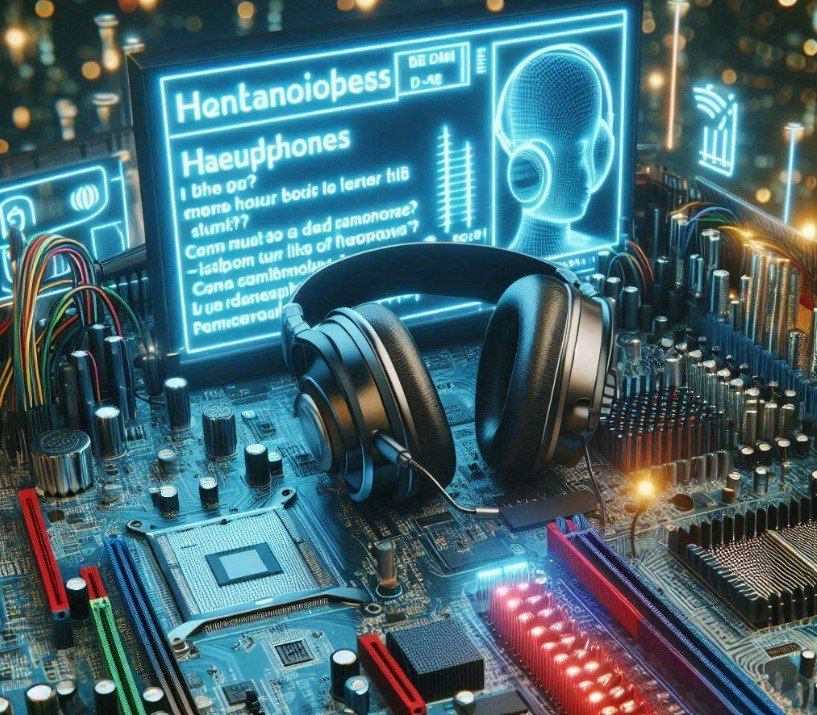
Understanding Beeps Coming From Motherboard
Motherboard beep codes are a set of sounds the BIOS makes during the boot process to inform you about different problems. Each set of beeps means a different mistake, which lets you figure out what’s wrong without a screen.
Because these codes are different for each manufacturer, you need to look at your BIOS’s unique troubleshooting guide. Knowing these beep codes can save you time and help you determine if you need to call a professional or if the problem can be fixed easily.
New Motherboard Won’t Stop Beeping
Diagnostic signs on a motherboard, like beep codes, help find hardware problems during startup. There are different beep patterns used by different BIOS makers to show different types of problems. This is what those beeps could mean based on the type of BIOS you have: The following are some common reasons why a new motherboard will not stop beeping:
- The message tells you there is a power issue, a short in a part, or the processor itself.
- Any card in a slot that is not fully inserted or flush.
- A steady beep means that a part plugged into the board through its socket or slot is not getting power—or, worst case that the device doesn’t work.
Do I Need My Internal Speaker To Hear Computer Beeps?
Yes, it would help if you needed an internal speaker to hear computer beeps. These speakers provide a beep of essential notifications, primarily if a hardware issue exists.
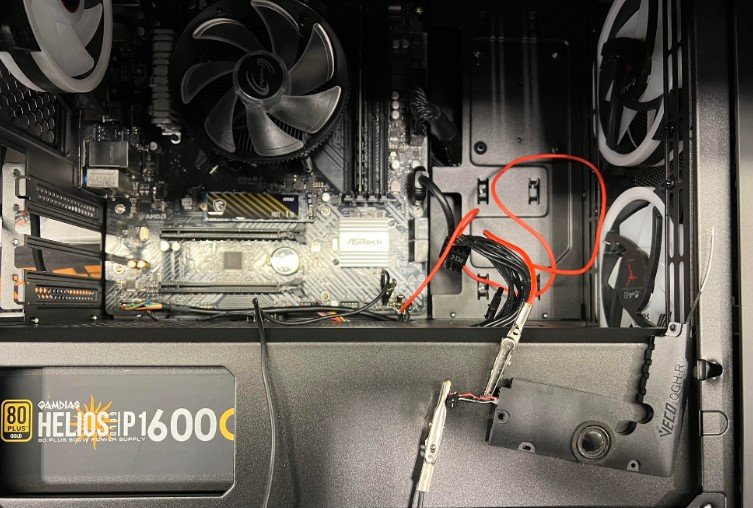
Why Do I Hear Beeping In My Headphones?
Your headphones may be picking up electrical interference. Attempt to locate and remove the source of the interference, or try wearing the headphones in a different location.
Any possible reasons, such as a cell phone, cordless phone, or wireless internet router, should be turned off and unplugged. Your product might require servicing if the problem arises while the headphones are not linked to an audio device.
How to Fix Beep Coming From Motherboard Using Headphones?
The motherboard’s inbuilt speaker produces diagnostic beeps. This sound may indicate hardware difficulties during the computer’s Power-On Self-Test (POST).
Even when external audio hardware isn’t connected or working, the motherboard’s beeps alert you to specific problems. If the motherboard keeps beeping and you wish to analyze or fix it via headphones or external speakers, try this:
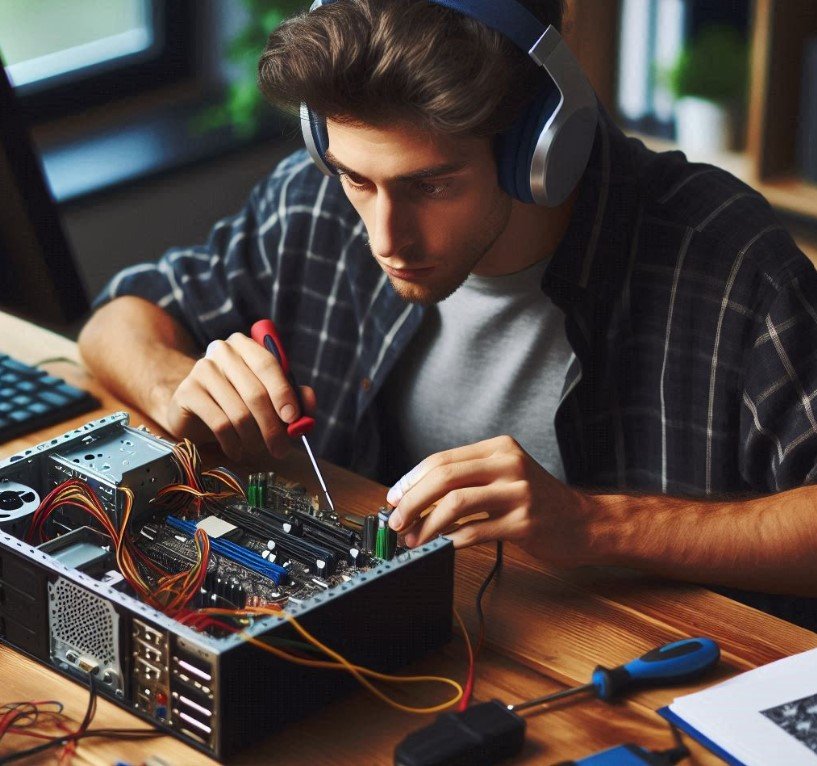
- To find the error code, listen for short, lengthy beeps and examine your motherboard’s documentation or the manufacturer’s website. This may indicate hardware issues.
- You might need to fix the problem after you find the error code. This may involve rearranging RAM modules, inspecting connections, or fixing hardware issues.
- If your BIOS/UEFI settings allow it, you can turn off system beeps to silence the internal speaker after fixing the issue.
- Many sophisticated motherboards incorporate diagnostic LEDs, digital displays, or audio output for error codes to external speakers. If your motherboard supports this, consult the handbook for setup instructions.
Does The BIOS Beep Come From The Same Sound Hardware Channel?
No. There is a small speaker built into the computer, or pins on the case connect to a small speaker to make a beep. It only depends on whichever motherboard audio controller is present.
Can I Use Earphones To Listen For Error Beeps During POST?
No, you cannot listen to error sounds during a post using earbuds or external speakers. The motherboard’s integrated internal speaker is the source of these noises.
How Do I Even Hear A Post Beep?
To hear the beeps, you need to connect a small speaker to the main header. Some motherboards may show the codes on the computer while they are going through the post-process, while others have LED readouts. You could check with your local radio shack to see if they have any computer speakers that you could use.
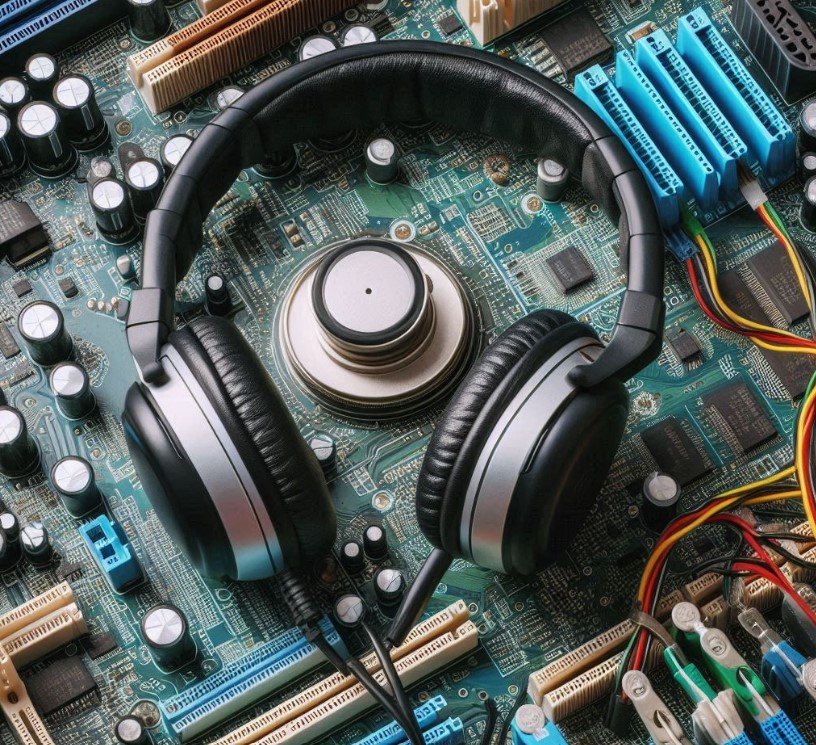
Identifying Common PC Issues by Sound
Most motherboards have beep codes that go off when the computer starts up and when a hardware part fails. When temperatures rise over average, the system fans will occasionally loudly increase in reaction, which is a sign of a CPU cooling failure.
Broken bearings in fans can cause them to tick or grind at frequencies related to their size and RPM; similarly, malfunctioning video cards can cause coil whine and an excessive electrical whining noise. Or that might be your speaker system’s ground loop!
Your computer can produce a wide variety of noises, all of which aid in precisely determining the issue. We decided to offer some examples of some of these noises for your reference to make it easier to distinguish between them.
Beep Codes without Speaker
There is no beep code without a speaker. Perhaps you must purchase the speaker because your motherboard has PC audio output connections. If not, you can connect a cheap internal audio controller explicitly made for beeps if your audio controllers don’t have a beep channel.
Do You Plug Your Headphones Into The Rear Output Of Your PC?
Yes. Although you can connect your headphones to your PC’s rear output, there are better locations for headphones. Since the manufacturers know this, they typically don’t optimize it for straight headphone jack connections.

This output, usually a DAC line output, is designed to be plugged into an external amplifier or active speakers. Its output impedance is typically very high, at least 150 ohms.
Generally speaking, motherboard makers optimize the font panel for headphones because it is in a much more handy place for doing so. If your motherboard has hardware for headphone amplification, it is often limited to the front-panel output.
Where To Plug In Headphones On Motherboard?
There are three primary audio ports on a motherboard or computer: Green, Pink, and Blue. Here, the main audio port is the green one. You can use it to listen to music and other audio sources with speakers or headphones.
A microphone can be used to record sounds using the Pink port. Subwoofers, home theatres, and other audio equipment can be connected to the blue audio connection.
The front of the CPU has two audio ports. The speaker uses the first, and a microphone or receiver uses the second. If you want to use both of these features simultaneously, you will need to install a 3.5 mm audio port split. If the computer’s motherboard does not have the necessary pins, you can buy an extra audio port.
How Do I Use My Motherboard Beep Code?
To use the motherboard beep code, follow the following instructions:

1 Beep – Refresh Failure
Reseat/replace memory and troubleshoot the motherboard.
2 Beeps – Parity Error
Reseat/replace memory and troubleshoot the motherboard.
3 Beeps – Memory Error (first 64KB)
Reseat/replace memory.
4 Beeps – Timer Failure
Troubleshoot motherboard.
5 Beeps – Processor Failure
Troubleshoot CPU and motherboard.
How To Hear Beep Codes?
Diagnostic beeps are created directly by the motherboard and are not routed through the sound card or external audio devices. Thus, it would help if you had an internal speaker connected to the motherboard to hear them.
If your computer doesn’t have a speaker, you can buy one and plug it into the motherboard’s “SPEAKER.” header. After connecting the internal speaker, turn on the computer and listen for hardware beeps.
Short and extended beep sequences indicate issues; consult your motherboard’s manual or the manufacturer’s website for details. This method detects RAM, GPU, and other hardware abnormalities.
Does Every Motherboard Have Debug Sounds?
Yes, all motherboards make those sounds. What’s wrong is shown by the Beep codes.
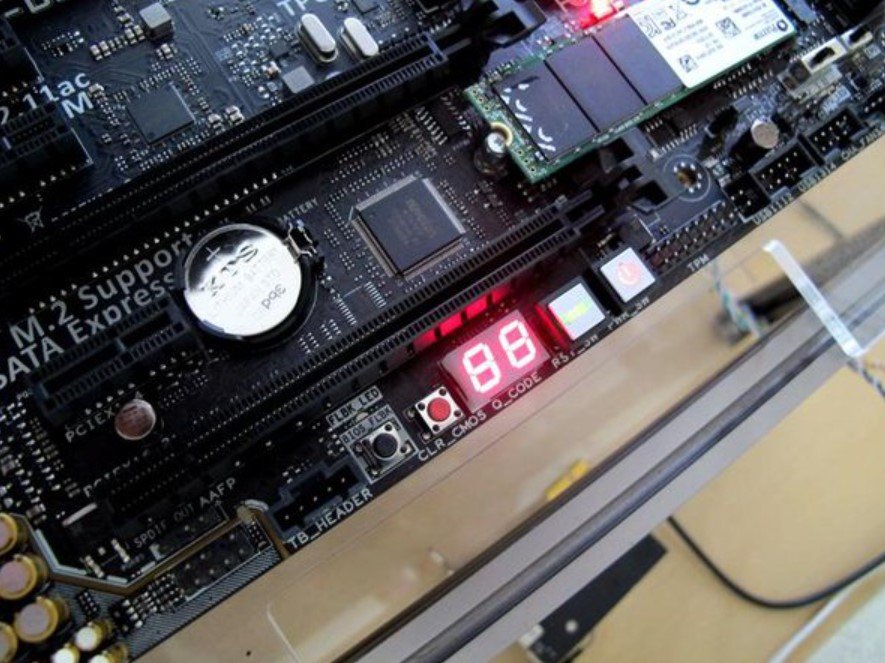
Where Does My Mobo Speaker Go?
The motherboard’s speaker connects to the f_panel2. The documentation or board should indicate this. Your case’s power switch and led should connect to this header.
Redirect Motherboard Beeps/Sounds to the Headphones Instead Of the Onboard Speaker
Disconnecting your internal speaker would be the simplest way to solve your issue. However, there isn’t a fix because the motherboard shouldn’t be beeping.
How Do I Hear Error Post Codes On A Modern Motherboard With No Speaker?
A small speaker attached to the on-board header is needed to hear beeps. The motherboard posts codes, some have led readouts and some display the codes on the monitor. Check your local radio shack for motherboard speakers.
Can I Use My Motherboard Speaker As Speaker For Everything?
No, you can’t use the motherboard speaker for all purposes. The problem is that the PC speaker is bad for overall sound. You would also need some magical filter to convert incoming audio into something that doesn’t sound like hot garbage in real time.
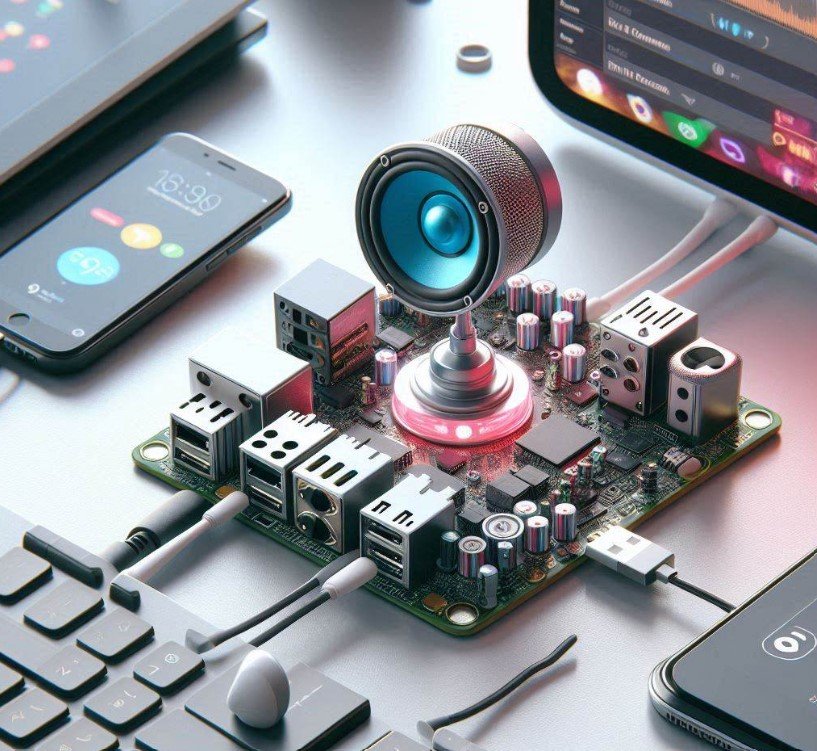
(Software that used PC speakers was aware of these restrictions and made great efforts to get around them; for better or worse, the industry has completely forgotten about them.)
Can I Diagnose POST W/Out System Speakers?
Yes! You have to use some diagnostic tools for this purpose. It does not have chassis speakers on the Thermaltake Tsunami.
How To Use Buzzer To Troubleshoot Monitor Display Issues?
Verify that the motherboard, power supply, CPU, and RAM are all connected correctly. If a buzzer is present, connect it to test the PC. Once it has been connected correctly, please turn the buzzer on and pay attention to its sound.
Conclusion
To answer, No, you cannot use headphones to hear diagnostic beeps from the motherboard. These beeps represent a few typical noises that are inaudible without headphones.
Not all mechanical failures sound the same, so if your Puget Systems PC makes an odd noise that isn’t on our list and you think it might be a hardware problem, contact our support staff and send us a video.
People Also Ask
What sound does BIOS beep?
It indicates that all systems are clear with a single beep, which indicates that there isn’t a real issue with you! There is one lengthy beep and two brief beeps, which indicate a checksum issue. This indicates a motherboard problem. The beep code 1-2-2-3 indicates the presence of a BIOS ROM checksum error.
What does a PC’s single beep mean?
Generally, a single short beep indicates the test was successful, whereas multiple beeps indicate a hardware issue with the machine. The pattern of beeps indicates where the hardware malfunction is located.






